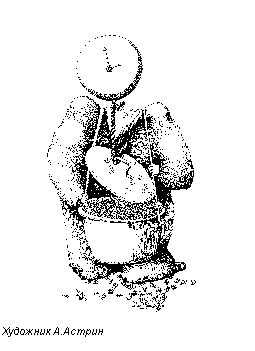Spring semester of 1996
Topic of the semester: RESEARCH PROGRAMS OF TIME STUDIES: FROM EINSTEIN TO PRIGOGINE

Yu. A. DANILOV. "TIME MACHINE IN THE LIGHT OF RECENT PHYSICAL WORKS" (ON THE BASIS OF THE PAPER BY J. EARMAN "RECENT WORK ON TIME TRAVEL" // TIME'S ARROW TODAY. RECENT PHYSICAL AND PHILISOPHICAL WORK ON THE DIRECTION OF TIME. ED. BY S. F. SAVITT. CAMBRIDGE UNIVERSITY PRESS, 1995)". Most philosophical works on the time machine problem emphasize the causality reversal and paradoxes. Meanwhile, the causality reversal is not essential for the most significant types of time machines, and paradoxes just indicate "weak points" in the understanding of what is physically possible. Really important problems remain shaded. Following Mill, Ramsey and Lewis, Earman elaborates on the problem of whether the physical laws of the Worlds within the time machine reach are identical to the laws of our World.
1) M. Ye. GERTSENSHTEIN. "RESTRICTIONS ON "TIME MACHINE" EXISTENCE IMPOSED BY GENERAL RELATIVITY ". There is a theorem: if (1) the space-time of General Relativity admits a stationary metric (it can have any, arbitrarily complicated spatial and topological structure); (2) there is at least one observer whose personal time agrees with the time coordinate (3) there are temporal loops in the space-time (causality is violated), - then such a metric is unstable. Consequences of this theorem for the Schwarzschild metric and its possible generalizations to nonstationary metrics are discussed. A physical interpretation of the results is related to E. Noether's theory, according to which the energy conservation law is valid in the case of a stationary metric. The theorem proved forbids gaining energy either from the past or the future.
2) I. N. GANSVIND. "A REVIEW OF THE BOOK "DREAMS OF A FINAL THEORY" BY S. WEINBERG (N.Y.: PANTHEON BOOK, 1992)". What is the background for the belief that a unified field theory can be constructed? What are the approaches that can lead to a future unified theory? How the unified theory will contribute to the conception of the World?
I. M. DMITRIYEVSKY. "SYMMETRY OF NATURAL LAWS AND ASYMMETRY OF OUR WORLD". The laws and equations that determine natural processes are specified by symmetry, invariance under inversion transformations of matter (C), space (P), and time (T). Violation of P-parity and then of CP-parity (and thus T-symmetry), observed 40 years ago in weak interactions, disagrees with the above rule. So far the mechanism of these symmetries violation is not clear. We propose a new model of weak interactions free of violation of the parity conservation law. In this theory spontaneous weak decays and parity violation are induced by a resonance interaction with the a relic neutrino-antineutrino pair. To verify the hypothesis, an experiment is proposed, based on the prediction of a new effect, a dependence of the beta-decay rate on the relic neutrino density. The observed possibility of the influence of relic radiation on natural phenomena is viewed as an alternative approach to the analysis of the effects explained by N.A. Kozyrev in terms of the influence of "the course of time". "The time paradox" can be resolved by the assumption that there is a world with a reverse direction of the arrow of time (similar to a C-antiworld). (I.M. Dmitriyevsky. Cosmophysical correlations in the animate and inanimate nature as manifestations of weak interactions. Biophysics, Vol.37, 4, 1992, pp. 674-680.)
M. B. MENSKY. "TIME AS A RESULT OF SELF-MEASUREMENT OF THE QUANTUM UNIVERSE". Quantum cosmology is underlied by the Wheeler-DeWitt equation which lacks a time parameter. Such a form of the equation results from the closed nature of the Universe but causes the problem of time: temporal evolution of the Universe is originally absent in quantum cosmology. It well agrees with the spirit of quantum mechanics which originally lacks classical characteristics of motion, such as trajectories. Classical characteristics arise, however, as a result of a measurement (observation) of a quantum system. Similarly, a classical geometry is brought about by a self-measurement of the Universe. And time emerges as one of the characteristics of classical geometry. In this picture a self-measurement is a measurement of the geometric degrees of freedom of the Universe, while the part of a measuring device is played by material degrees of freedom. (M.B. Mensky. Time in quantum cosmology from the self-measurement of the Universe // General Relativity and Gravitation. 1991,, Vol. 23, No. 2, pp. 123-128. M.B. Mensky. Continuous Quantum Measurements and Path Integrals. Bristol and Philadelphia: IOP Publishing, 1993.)
G. I. SHIPOV. "A NEW CONCEPTION OF TIME IN THE THEORY OF PHYSICAL VACUUM". In the theory of physical vacuum a new metric arises, connected with angular variables. A physical interpretation of this metric in terms of a nonrelativistic approach can be given in the form of the existence of three times. It demonstrates a deep involvement of Kozyrev's ideas dealing with the "course" of time in the theory of physical vacuum. Changes in the course of time turn out to be related to the rotational motion of matter, that is why varying the rotation, we can change the course of time. As an actual example we consider a model of a four-dimensional gyroscope, demonstrating a connection between the translational and rotational motion of the mass center; this provides a possibility "artificial" changes of the course of time. (Preprint VENT, 1995, No. 64 Preprint of the International Institute for Theoretical and Applied Physics. 1995, No. 1. G.I. Shipov. The theory of physical vacuum. Moscow: NTcenter, l993, in Russian.)
A. P. LEVICH. "TIME AS A DERIVATIVE OF MATTER OR ENERGY" . In the scientific description of the world there is an evident conflict between the time reversibility of the fundamental physical laws and the formation phenomenon in nature, that is, an unconditional distinction between the past, present and future in the world of real processes. Recent attempts to solve "the paradox of time" result in the necessity of abandoning the concept of isolation of systems characterized by the formation phenomenon, and in particular the concept of the closed Universe. For open systems "the nature" of time phenomenon turns to be rather trivial: the course of time is created and parametrized by fluxes of energy and matter in whose respect the system is not isolated. The concepts of natural references of time suggested by Kozyrev, Prigogine and others are discussed. (N.A. Kozyrev. Selected works. Leningrad: Leningrad University Press, 1991 (in Russian). I. Prigogine and I. Stengers. Time, chaos, and quant. Moscow: Progress, 1994. K. P. Butusov. Time as a physical substance // Time-Space problems in modern natural science / Problems in the Study of the Universe, Issue 14, Leningrad, 1990, Pp. 301-311 (in Russian). A.P. Levich. Time as variability of natural systems: ways of quantitative description of changes and creation of changes by substantial flows // On the Way to Understanding the Time Phenomenon: the Constructions of Time in Natural Science. Part l. Interdisciplinary Time Studies. World Scientific, 1995, Pp.149-192.)
V. P. MAIKOV. "COSMOLOGICAL TIME AND EVOLUTION OF A MATERIAL MEDIUM (A MACRO-QUANTUM APPROACH)". The thermodynamic equilibrium state in classical (static or dynamic) terms, in a strict sense, does not really exist since the evolution of the discrete space-time metric spontaneously lowers the temperature and entropy of material medium in any state (energy "inflation"). This is one of the consequences of the macroquantum approach. Though under normal conditions the inflation rate is insignificant this effect is crucial for time intervals on the cosmological scale. Another conclusion of fundamental significance is the predicted existence of an ultimate thermodynamic state of a material medium on the Planck scale (a singular state of the physical vacuum). Near the Planck temperature the inflation rate of the space-time curvature radius is extremely high (a virtual "Big Bang"). These conclusions allow one to view the global evolution of material media within the framework of thermodynamic balance in its refined formulation, that is, taking into consideration the macro-quantum and general relativistic effects. The proposed approach, being a macrolevel theory, leads logically to solving the problems of the contiguous (mega) level.
Yu. A. BAUROV. "ON THE STRUCTURE OF PHYSICAL SPACE AND A NEW INTERACTION IN NATURE". A new conception of the observed physical space formation from a finite set of one-dimensional discrete objects, named byuons, is proposed. It is shown why the observed space is three-dimensional; the matter density in the Universe and the Galaxy magnetic field magnitude are estimated; the origin of the relic microwave background is explained; the masses of elementary particles and the constants of the existing interactions are estimated, etc. The elementary particle masses are proportional to the modulus of a cosmological vector potential. In this connection, it has been assumed that a new interaction exists in nature, induced by the decrease of the cosmological vector potential at the expense of the vector potential of a magnetic system. Experiments carried out at the Kurchatov Institute of Atomic Energy, the Institute of General Physics and Central Research Institute of Mechanical Engineering have confirmed the existence of a new interaction, which has given a basis for the design of engine and generator models using the physical vacuum energy. The proposed space structure model on the basis of byuons allows to approach an understanding of the human mental process, since it discovers an absolutely new communication channel unifying all the objects of the Universe into a single information field. (Yu.A. Baurov. Physical Thought in Russia, 1994, No. 1, p. 18 (in Russian). Yu.A. Baurov, E.Yu. Klimenko, S.I. Novikov. Phys. Lett., 1992, A162, P. 32. Yu.A. Baurov, B.M. Seryegin, A.V. Chernikov. Physical Thought in Russia, 1994, No. 1 P. 1.)




